Latest Electricity News - Grid Technologies

TransAlta Poised to Finalize Alberta Data Centre Agreement in 2025
TransAlta Alberta Data Centre integrates AI, cloud computing, and renewable energy, tackling electricity demand, grid capacity, decarbonization, and energy storage with clean power, cooling efficiency, and PPA-backed supply for hyperscale workloads.
Key Points
TransAlta Alberta Data Centre is a planned AI facility powered mostly by renewables to meet high electricity demand.
✅ Targets partner exclusivity mid-year; ops 18-24 months post-contract.
✅ Supplies ~90% power via TransAlta; balance from market.
✅ Anchors $3.5B clean energy growth and storage in Alberta.
TransAlta Corp., one of Alberta’s leading power producers, is moving toward finalizing agreements with partners to establish a data centre in the province, aligned with AI data center grid integration efforts nationally, aiming to have definitive contracts signed before the end of the year.
CEO John Kousinioris stated during an analyst conference that the company seeks to secure exclusivity with key partners by mid-year, with detailed design plans and final agreements expected by late 2025. Once the contracts are signed, the data centre is anticipated to be operational within 18 to 24 months, a horizon mirrored by Medicine Hat AI grid upgrades initiatives that aim to modernize local systems.
Data centres, which are critical for high-tech industries such as artificial intelligence, consume large amounts of electricity to run and cool servers, a trend reflected in U.S. utility power challenges reporting, underscoring the scale of energy demand. In this context, TransAlta plans to supply around 90% of its partner's energy needs for the facility, with the remainder coming from the broader electricity market.
Alberta has identified data centres as a strategic priority, aiming to see $100 billion in AI-related data centre construction over the next five years. However, the rapid growth of this sector presents challenges for the region’s energy infrastructure. Electricity demand from data centres has already outpaced the available capacity in Alberta’s power grid, intensifying discussions about a western Canadian electricity grid to improve regional reliability, potentially impacting the province’s decarbonization goals.
To address these challenges, TransAlta has adopted a renewable energy investment strategy. The company announced a $3.5 billion growth plan focused primarily on clean electricity generation and storage, as British Columbia's clean energy shift advances across the region, through 2028. By then, more than two-thirds of TransAlta’s earnings are expected to come from renewable power generation, supporting progress toward a net-zero electricity grid by 2050 nationally.
The collaboration between TransAlta and data centre developers represents an opportunity to balance growing energy demand with sustainability goals. By integrating renewable energy generation into data centre operations and broader macrogrid investments, Alberta could move toward a cleaner and more resilient energy future.
Related News
Sign Up for Electricity Forum’s News Service
Weekly updates from our FREE News Service—get the latest news, breakthrough technologies, and expert insights, delivered straight to your inbox.
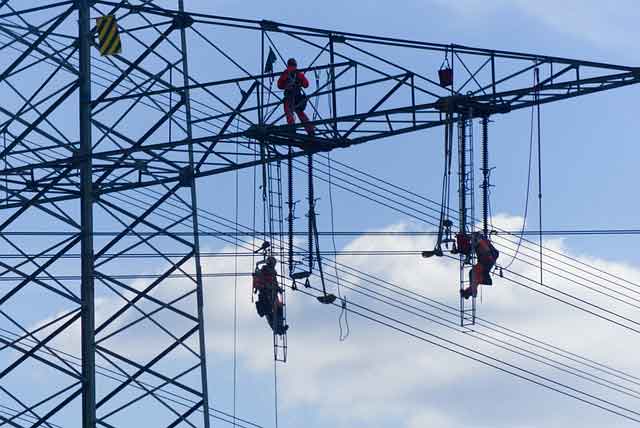
TCS Partners with Schneider Electric Marathon de Paris to Boost AI and Technology
TCS AI Partnership Paris Marathon integrates predictive analytics, digital twin simulations, real-time runner tracking, and sustainability solutions to elevate logistics, athlete performance, and immersive spectator engagement across the Schneider Electric Marathon de Paris ecosystem.
Key Points
AI-driven TCS partnership enhancing Paris logistics, performance, engagement, and sustainability for three years.
✅ Predictive analytics and digital twins optimize race-day ops
✅ Real-time runner tracking and health insights
✅ Sustainable resource management and waste reduction
Tata Consultancy Services (TCS) has officially become the AI & Technology Partner for the Schneider Electric Marathon de Paris, marking the start of a three-year collaboration with one of the world’s most prestigious running events. This partnership, announced on April 1, 2025, aims to revolutionize the marathon experience by integrating cutting-edge technology, artificial intelligence (AI), and data analytics, and modern AI data centers to power scalable capabilities, enhancing both the runner's journey and the spectator experience.
The Schneider Electric Marathon de Paris, which attracts over 55,000 runners from across the globe, is a renowned event that not only challenges athletes but also captivates a worldwide audience. As the Official AI & Technology Partner, TCS is set to bring its deep expertise in AI, digital innovation, and data-driven insights to this iconic event, drawing on adjacent domains such as substation automation training to strengthen operations. With more than 30 years of presence in France and its significant partnerships with French corporations, TCS is uniquely positioned to merge its global technology capabilities with local knowledge, thus adding immense value to this prestigious marathon.
The collaboration will primarily focus on enhancing the race logistics, improving athlete performance, and creating a personalized experience for both runners and spectators. Using advanced AI tools, predictive analytics, and digital twin technologies, TCS will streamline various aspects of the event. For example, AI-powered predictive models, reflecting progress recognized by European electricity prediction specialists in forecasting, will be used to track and monitor runners in real-time, providing insights into their performance and well-being during the race. Additionally, the implementation of digital twin technology will enable TCS to create accurate virtual models of the event, improving logistics and supporting better decision-making.
One of the key goals of the partnership is to improve the sustainability of the marathon. By utilizing advanced AI solutions, including AI for energy savings approaches, TCS will help optimize race-day operations, ensuring efficient management of resources, reducing waste, and minimizing environmental impact. This aligns with the growing trend of incorporating sustainability into large-scale events, ensuring that such iconic marathons not only provide an exceptional experience for participants but also contribute to global environmental goals.
TCS’s PacePort™ innovation hub in Paris will play a pivotal role in the collaboration. This innovation center will serve as the testing ground for new AI-powered solutions and tools aimed at improving runner performance and creating a more engaging race experience. Early priorities for the project include the development of personalized AI-based training programs for runners, real-time tracking systems for athlete health monitoring, and advanced analytics to support better training and recovery strategies, drawing on insights from EU smart meter analytics to inform personalization.
Additionally, TCS will introduce new technologies to enhance spectator engagement. Digital experiences, such as virtual race tracking and immersive content, will bring spectators closer to the event, even if they are not physically present at the marathon. This will allow fans worldwide to engage with the race in more interactive ways, enhancing the global reach and excitement surrounding the event.
TCS’s role in the Schneider Electric Marathon de Paris is part of its broader strategy to leverage technology in the realm of sports. The company already supports several major global marathons, including those in New York, London, where projects like the London electricity tunnel showcase infrastructure innovation, and Mumbai, contributing to their operational success and social impact. In fact, marathons supported by TCS raised nearly $280 million for charitable causes in 2024 alone, demonstrating the company’s commitment to blending innovation with social responsibility.
The strategic partnership with the Paris marathon also underscores TCS’s continued commitment to its French operations, and aligns with Schneider Electric’s Notre Dame restoration initiatives that highlight local impact, reinforcing its role as a leader in AI and digital technology. Through this collaboration, TCS aims to not only support the marathon’s logistical and technological needs but also to contribute to the broader development of digital sports experiences.
This partnership promises to deliver a more dynamic, sustainable, and engaging marathon experience, benefiting runners, spectators, and the broader event ecosystem. With TCS’s cutting-edge technology and commitment to enhancing the marathon, the Schneider Electric Marathon de Paris is poised to set new standards for global sports events, blending athletic performance with digital innovation in unprecedented ways.
Related News
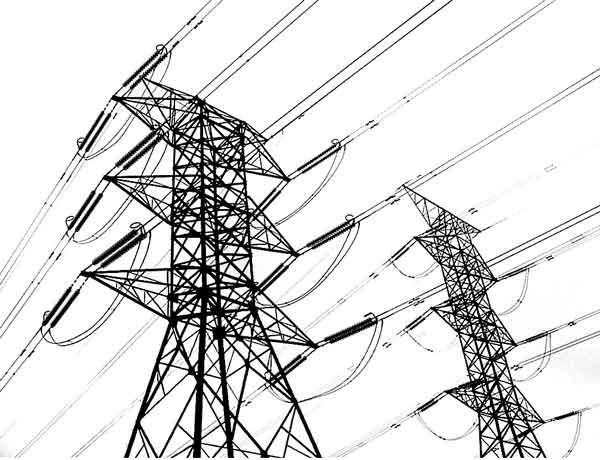
Integrating AI Data Centers into Canada's Electricity Grids
Canada AI Data Center Grid Integration aligns AI demand with renewable energy, energy storage, and grid reliability. It emphasizes transmission upgrades, liquid cooling efficiency, and policy incentives to balance economic growth with sustainable power.
Key Points
Linking AI data centers to Canada's grid with renewables, storage, and efficiency to ensure reliable, sustainable power.
✅ Diversify supply with wind, solar, hydro, and firm low-carbon resources
✅ Deploy grid-scale batteries to balance peaks and enhance reliability
✅ Upgrade transmission, distribution, and adopt liquid cooling efficiency
Artificial intelligence (AI) is revolutionizing various sectors, driving demand for data centers that support AI applications. In Canada, this surge in data center development presents both economic opportunities and challenges for the electricity grid, where utilities using AI to adapt to evolving demand dynamics. Integrating AI-focused data centers into Canada's electricity infrastructure requires strategic planning to balance economic growth with sustainable energy practices.
Economic and Technological Incentives
Canada has been at the forefront of AI research for over three decades, establishing itself as a global leader in the field. The federal government has invested significantly in AI initiatives, with over $2 billion allocated in 2024 to maintain Canada's competitive edge and to align with a net-zero grid by 2050 target nationwide. Provincial governments are also actively courting data center investments, recognizing the economic and technological benefits these facilities bring. Data centers not only create jobs and stimulate local economies but also enhance technological infrastructure, supporting advancements in AI and related fields.
Challenges to the Electricity Grid
However, the energy demands of AI data centers pose significant challenges to Canada's electricity grid, mirroring the power challenge for utilities seen in the U.S., as demand rises. The North American Electric Reliability Corporation (NERC) has raised concerns about the growing electricity consumption driven by AI, noting that the current power generation capacity may struggle to meet this increasing demand, while grids are increasingly exposed to harsh weather conditions that threaten reliability as well. This situation could lead to reliability issues, including potential blackouts during peak demand periods, jeopardizing both economic activities and the progress of AI initiatives.
Strategic Integration Approaches
To effectively integrate AI data centers into Canada's electricity grids, a multifaceted approach is essential:
-
Diversifying Energy Sources: Relying solely on traditional energy sources may not suffice to meet the heightened demands of AI data centers. Incorporating renewable energy sources, such as wind, solar, and hydroelectric power, can provide sustainable alternatives. For instance, Alberta has emerged as a proactive player in supporting AI-enabled data centers, with the TransAlta data centre agreement expected to advance this momentum, leveraging its renewable energy potential to attract such investments.
-
Implementing Energy Storage Solutions: Integrating large-scale battery storage systems can help manage the intermittent nature of renewable energy. These systems store excess energy generated during low-demand periods, releasing it during peak times to stabilize the grid. In some communities, AI-driven grid upgrades complement storage deployments to optimize operations, which supports data center needs and community reliability.
-
Enhancing Grid Infrastructure: Upgrading transmission and distribution networks is crucial to handle the increased load from AI data centers. Strategic investments in grid infrastructure can prevent bottlenecks and ensure efficient energy delivery, including exploration of macrogrids in Canada to improve regional transfers, supporting both existing and new data center operations.
-
Adopting Energy-Efficient Data Center Designs: Designing data centers with energy efficiency in mind can significantly reduce their power consumption. Innovations such as liquid cooling systems are being explored to manage the heat generated by high-density AI workloads, offering more efficient alternatives to traditional air cooling methods.
-
Establishing Collaborative Policies: Collaboration among government entities, utility providers, and data center operators is vital to align energy policies with technological advancements. Developing regulatory frameworks that incentivize sustainable practices can guide the growth of AI data centers in harmony with grid capabilities.
Integrating AI data centers into Canada's electricity grids presents both significant opportunities and challenges. By adopting a comprehensive strategy that includes diversifying energy sources, implementing advanced energy storage, enhancing grid infrastructure, promoting energy-efficient designs, and fostering collaborative policies, Canada can harness the benefits of AI while ensuring a reliable and sustainable energy future. This balanced approach will position Canada as a leader in both AI innovation and sustainable energy practices.
Related News
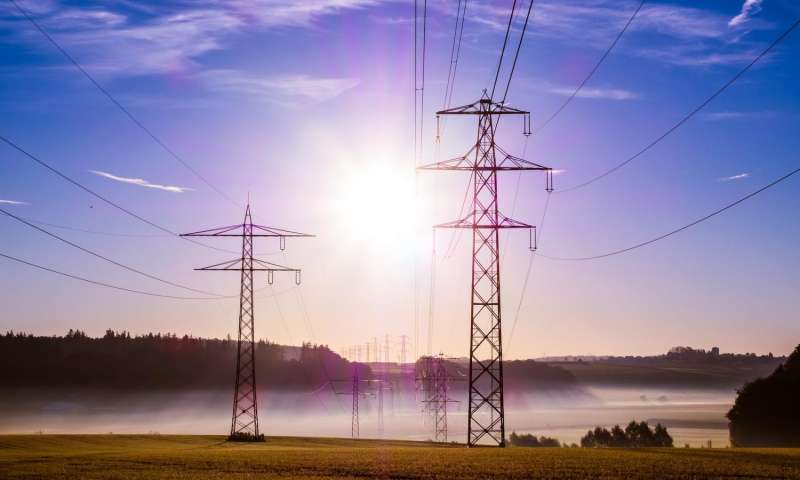
Baltic States Disconnect from Russian Power Grid, Join EU System
Baltic States EU Grid Synchronization strengthens energy independence and electricity security, ending IPS/UPS reliance. Backed by interconnectors like LitPol Link, NordBalt, and Estlink, it aligns with NATO interests and safeguards against subsea infrastructure threats.
Key Points
A shift by Estonia, Latvia, and Lithuania to join the EU grid, boosting energy security and reducing Russian leverage.
✅ Synchronized with EU grid on Feb 9, 2025 after islanding tests.
✅ New interconnectors: LitPol Link, NordBalt, Estlink upgrades.
✅ Reduces IPS/UPS risks; bolsters NATO and critical infrastructure.
In a landmark move towards greater energy independence and European integration, the Baltic nations of Estonia, Latvia, and Lithuania have officially disconnected from Russia's electricity grid, a path also seen in Ukraine's rapid grid link to the European system. This decisive action, completed in February 2025, not only ends decades of reliance on Russian energy but also enhances the region's energy security and aligns with broader geopolitical shifts.
Historical Context and Strategic Shift
Historically, the Baltic states were integrated into the Russian-controlled IPS/UPS power grid, a legacy of their Soviet past. However, in recent years, these nations have sought to extricate themselves from Russian influence, aiming to synchronize their power systems with the European Union (EU) grid. This transition gained urgency following Russia's annexation of Crimea in 2014 and further intensified after the invasion of Ukraine in 2022, as demonstrated by Russian strikes on Ukraine's grid that underscored energy vulnerability.
The Disconnection Process
The process culminated on February 8, 2025, when Estonia, Latvia, and Lithuania severed their electrical ties with Russia. For approximately 24 hours, the Baltic states operated in isolation, conducting rigorous tests to ensure system stability and resilience, echoing winter grid protection efforts seen elsewhere. On February 9, they successfully synchronized with the EU's continental power grid, marking a historic shift towards European energy integration.
Geopolitical and Security Implications
This transition holds significant geopolitical weight. By disconnecting from Russia's power grid, the Baltic states reduce potential leverage that Russia could exert through energy supplies. The move also aligns with NATO's strategic interests, enhancing the security of critical infrastructure in the region, amid concerns about Russian hacking of US utilities that highlight cyber risks.
Economic and Technical Challenges
The shift was not without challenges. The Baltic states had to invest heavily in infrastructure to ensure compatibility with the EU grid and navigate regional market pressures such as a Nordic grid blockade affecting transmission capacity. This included constructing new interconnectors and upgrading existing facilities. For instance, the LitPol Link between Lithuania and Poland, the NordBalt cable connecting Lithuania and Sweden, and the Estlink between Estonia and Finland were crucial in facilitating this transition.
Impact on Kaliningrad
The disconnection has left Russia's Kaliningrad exclave isolated from the Russian power grid, relying solely on imports from Lithuania. While Russia claims to have measures in place to maintain power stability in the region, the long-term implications remain uncertain.
Ongoing Security Concerns
The Baltic Sea region has experienced heightened security concerns, particularly regarding subsea cables and pipelines. Increased incidents of damage to these infrastructures have raised alarms about potential sabotage, including a Finland cable damage investigation into a suspected Russian-linked vessel. Authorities continue to investigate these incidents, emphasizing the need for robust protection of critical energy infrastructure.
The successful disconnection and synchronization represent a significant step in the Baltic states' journey towards full integration with European energy markets. This move is expected to enhance energy security, promote economic growth, and solidify geopolitical ties with the EU and NATO. As the region continues to modernize its energy infrastructure, ongoing vigilance against security threats will be paramount, as recent missile and drone attacks on Kyiv's grid demonstrate.
The Baltic states' decision to disconnect from Russia's power grid and synchronize with the European energy system is a pivotal moment in their post-Soviet transformation. This transition not only signifies a break from historical dependencies but also reinforces their commitment to European integration and collective security. As these nations continue to navigate complex geopolitical landscapes, their strides towards energy independence serve as a testament to their resilience and strategic vision.
Related News
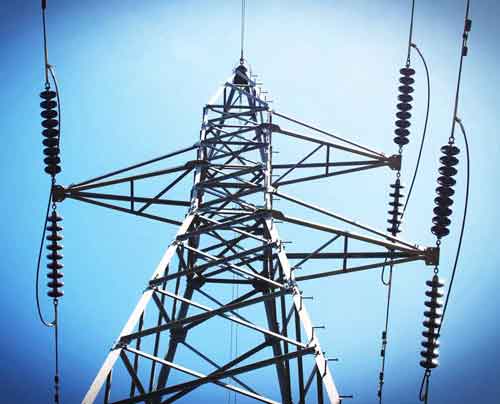
Finland Investigates Russian Ship After Electricity Cable Damage
Finland Shadow Fleet Cable Investigation details suspected Russia-linked sabotage of Baltic Sea undersea cables, AIS dark activity, and false-flag tactics threatening critical infrastructure, prompting NATO and EU vigilance against hybrid warfare across Northern Europe.
Key Points
Finland probes suspected sabotage of undersea cables by a Russia-linked vessel using flag of convenience and AIS off.
✅ Undersea cable damage in Baltic Sea sparks security alerts
✅ Suspected shadow fleet ship ran AIS dark under false flag
✅ NATO and EU boost maritime surveillance, critical infrastructure
In December 2024, Finland launched an investigation into a ship allegedly linked to Russia’s “shadow fleet” following a series of incidents involving damage to undersea cables. The investigation has raised significant concerns in Finland and across Europe, as it suggests possible sabotage or other intentional acts related to the disruption of vital communication and energy infrastructure in the Baltic Sea region. This article explores the key details of the investigation, the role of Russia’s shadow fleet, and the broader geopolitical implications of this event.
The "Shadow Fleet" and Its Role
The term “shadow fleet” refers to a collection of ships, often disguised or operating under false flags, that are believed to be part of Russia's covert maritime operations. These vessels are typically used for activities such as smuggling, surveillance, and potentially military operations, mirroring the covert hacker infrastructure documented by researchers in related domains. In recent years, the "shadow fleet" has been under increasing scrutiny due to its involvement in various clandestine actions, especially in regions close to NATO member countries and areas with sensitive infrastructure.
Russia’s "shadow fleet" operates in the shadows of regular international shipping, often difficult to track due to the use of deceptive practices like turning off automatic identification systems (AIS). This makes it difficult for authorities to monitor their movements and assess their true purpose, raising alarm bells when one of these ships is suspected of being involved in damaging vital infrastructure like undersea cables.
The Cable Damage Incident
The investigation was sparked after damage was discovered to an undersea cable in the Baltic Sea, a vital link for communication, data transmission, and energy supply between Finland and other parts of Europe. These undersea cables are crucial for everything from internet connections to energy grid stability, with recent Nordic grid constraints underscoring their importance, and any disruption to them can have serious consequences.
Finnish authorities reported that the damage appeared to be deliberate, raising suspicions of potential sabotage. The timing of the damage coincides with a period of heightened tensions between Russia and the West, particularly following the escalation of the war in Ukraine, with recent strikes on Ukraine's power grid highlighting the stakes, and ongoing geopolitical instability. This has led many to speculate that the damage to the cables could be part of a broader strategy to undermine European security and disrupt critical infrastructure.
Upon further investigation, a vessel that had been in the vicinity at the time of the damage was identified as potentially being part of Russia’s "shadow fleet." The ship had been operating under a false flag and had disabled its AIS system, making it challenging for authorities to track its movements. The vessel’s activities raised red flags, and Finnish authorities are now working closely with international partners to ascertain its involvement in the incident.
Geopolitical Implications
The damage to undersea cables and the suspected involvement of Russia’s "shadow fleet" have broader geopolitical implications, particularly in the context of Europe’s security landscape. Undersea cables are considered critical infrastructure, akin to electric utilities where intrusions into US control rooms have been documented, and any deliberate attack on them could be seen as an act of war or an attempt to destabilize regional security.
In the wake of the investigation, there has been increased concern about the vulnerability of Europe’s energy and communication networks, which are increasingly reliant on these undersea connections, and as the Baltics pursue grid synchronization with the EU to reduce dependencies, policymakers are reassessing resilience measures. The European Union, alongside NATO, has expressed growing alarm over potential threats to this infrastructure, especially as tensions with Russia continue to escalate.
The incident also highlights the growing risks associated with hybrid warfare tactics, which combine conventional military actions with cyberattacks, including the U.S. condemnation of power grid hacking as a cautionary example, sabotage, and disinformation campaigns. The targeting of undersea cables could be part of a broader strategy by Russia to disrupt Europe’s ability to coordinate and respond effectively, particularly in the context of ongoing sanctions and diplomatic pressure.
Furthermore, the suspected involvement of a "shadow fleet" ship raises questions about the transparency and accountability of maritime activities in the region. The use of vessels operating under false flags or without identification systems complicates efforts to monitor and regulate shipping in international waters. This has led to calls for stronger maritime security measures and greater cooperation between European countries to ensure the safety and integrity of critical infrastructure.
Finland’s Response and Ongoing Investigation
In response to the cable damage incident, Finnish authorities have mobilized a comprehensive investigation, seeking to determine the extent of the damage and whether the actions were deliberate or accidental. The Finnish government has called for increased vigilance and cooperation with international partners to identify and address potential threats to undersea infrastructure, drawing on Symantec's Dragonfly research for insights into hostile capabilities.
Finland, which shares a border with Russia and has been increasingly concerned about its security in the wake of Russia's invasion of Ukraine, has ramped up its defense posture. The damage to undersea cables serves as a stark reminder of the vulnerabilities that come with an interconnected global infrastructure, and Finland’s security services are likely to scrutinize the incident as part of their broader defense strategy.
Additionally, the incident is being closely monitored by NATO and the European Union, both of which have emphasized the importance of safeguarding critical infrastructure. As an EU member and NATO partner, Finland’s response to this situation could influence how Europe addresses similar challenges in the future.
The investigation into the damage to undersea cables in the Baltic Sea, allegedly linked to Russia’s "shadow fleet," has significant implications for European security. The use of covert operations, including the deployment of ships under false flags, underscores the growing threats to vital infrastructure in the region. With tensions between Russia and the West continuing to rise, the potential for future incidents targeting critical communication and energy networks is a pressing concern.
As Finland continues its investigation, the incident highlights the need for greater international cooperation and vigilance in safeguarding undersea cables and other critical infrastructure. In a world where hybrid warfare tactics are becoming increasingly common, ensuring the security of these vital connections will be crucial for maintaining stability in Europe. The outcome of this investigation may serve as a crucial case study in the ongoing efforts to protect infrastructure from emerging and unconventional threats.
Related News
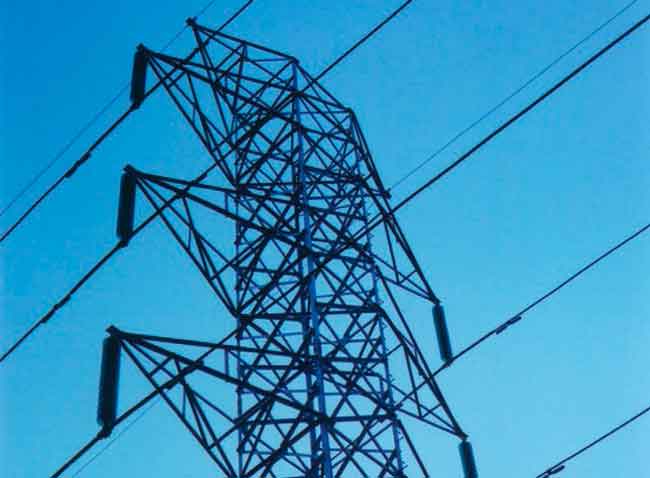
Schneider Electric Aids in Notre Dame Restoration
Schneider Electric Notre Dame Restoration delivers energy management, automation, and modern electrical infrastructure, boosting safety, sustainability, smart monitoring, efficient lighting, and power distribution to protect heritage while reducing consumption and future-proofing the cathedral.
Key Points
Schneider Electric upgrades Notre Dame's electrical systems to enhance safety, sustainability, automation, and efficiency.
✅ Energy management modernizes power distribution and lighting.
✅ Advanced safety and monitoring reduce fire risk.
✅ Sustainable automation lowers consumption while preserving heritage.
Schneider Electric, a global leader in energy management and automation, exemplified by an AI and technology partnership in Paris, has played a significant role in the restoration of the Notre Dame Cathedral in Paris following the devastating fire of April 2019. The company has contributed by providing its expertise in electrical systems, ensuring the cathedral’s systems are not only restored but also modernized with energy-efficient solutions. Schneider Electric’s technology has been crucial in rebuilding the cathedral's electrical infrastructure, focusing on safety, sustainability, and preserving the iconic monument for future generations.
The fire, which caused widespread damage to the cathedral’s roof and spire, raised concerns about both the physical restoration and the integrity of the building’s systems, including rising ransomware threats to power grids that affect critical infrastructure. As Notre Dame is one of the most visited and revered landmarks in the world, the restoration process required advanced technical solutions to meet the cathedral’s complex needs while maintaining its historical authenticity.
Schneider Electric's contribution to the project has been multifaceted. The company’s solutions helped restore the electrical systems in a way that reduces the energy consumption of the building, improving sustainability without compromising the historical essence of the structure. Schneider Electric worked closely with architects, engineers, and restoration experts to implement innovative energy management technologies, such as advanced power distribution, lighting systems, and monitoring solutions like synchrophasor technology for enhanced grid visibility.
In addition to energy-efficient solutions, Schneider Electric’s efforts in safety and automation have been vital. The company provided expertise in reinforcing the electrical safety systems, leveraging digital transformer stations to improve reliability, which is especially important in a building as old as Notre Dame. The fire highlighted the importance of modern safety systems, and Schneider Electric’s technology ensures that the restored cathedral will be better protected in the future, with advanced monitoring systems capable of detecting any anomalies or potential hazards.
Schneider Electric’s involvement also aligns with its broader commitment to sustainability and energy efficiency, echoing calls to invest in a smarter electricity infrastructure across regions. By modernizing Notre Dame’s electrical infrastructure, the company is helping the cathedral move toward a more sustainable future. Their work represents the fusion of cutting-edge technology and historic preservation, ensuring that the building remains an iconic symbol of French culture while adapting to the modern world.
The restoration of Notre Dame is a massive undertaking, with thousands of workers and experts from various fields involved in its revival. Schneider Electric’s contribution highlights the importance of collaboration between heritage conservationists and modern technology companies, and reflects developments in HVDC technology in Europe that are shaping modern grids. The integration of such advanced energy management solutions allows the cathedral to function efficiently while maintaining the integrity of its architectural design and historical significance.
As the restoration progresses, Schneider Electric’s efforts will continue to support the cathedral’s recovery, with the ultimate goal of reopening Notre Dame to the public, reflecting best practices in planning for growing electricity needs in major cities. Their role in this project not only contributes to the physical restoration of the building but also ensures that it remains a symbol of resilience, cultural heritage, and the importance of combining tradition with innovation.
Schneider Electric’s involvement in the restoration of Notre Dame Cathedral is a testament to how modern technology can be seamlessly integrated into historic preservation efforts. The company’s work in enhancing the cathedral’s electrical systems has been crucial in restoring and future-proofing the monument, ensuring that it will continue to be a beacon of French heritage for generations to come.
Related News
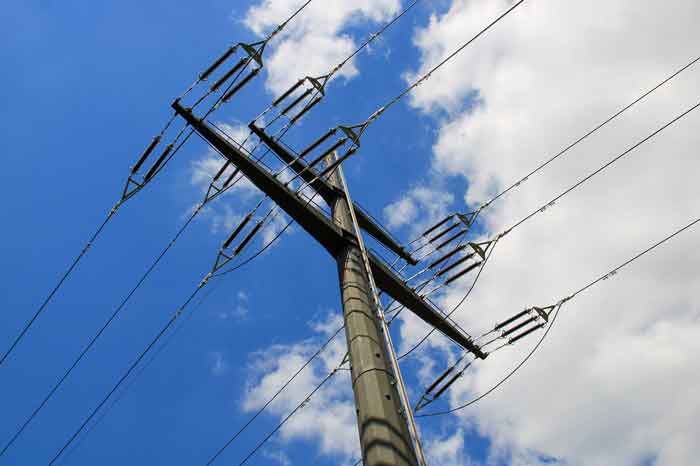
Medicine Hat Grant Winners to Upgrade Grid and Use AI for Energy Savings
Medicine Hat Smart Grid AI modernizes electricity distribution with automation, sensors, and demand response, enhancing energy efficiency and renewable integration while using predictive analytics and real-time data to reduce consumption and optimize grid operations.
Key Points
An initiative using smart grid tech and AI to optimize energy use, cut waste, and improve renewable integration.
✅ Predictive analytics forecast demand to balance load and prevent outages.
✅ Automation, sensors, and meters enable dynamic, resilient distribution.
✅ Integrates solar and wind with demand response to cut emissions.
The city of Medicine Hat, Alberta, is taking bold steps toward enhancing its energy infrastructure and reducing electricity consumption with the help of innovative technology. Recently, several grant winners have been selected to improve the city's electricity grid distribution and leverage artificial intelligence (AI) to adapt to electricity demands while optimizing energy use. These projects promise to not only streamline energy delivery but also contribute to more sustainable practices by reducing energy waste.
Advancing the Electricity Grid
Medicine Hat’s electricity grid is undergoing a significant transformation, thanks to a new set of initiatives funded by government grants that advance a smarter electricity infrastructure vision for the region. The city has long been known for its commitment to sustainable energy practices, and these new projects are part of that legacy. The winners of the grants aim to modernize the city’s electricity grid to make it more resilient, efficient, and adaptable to the changing demands of the future, aligning with macrogrid strategies adopted nationally.
At the core of these upgrades is the integration of smart grid technologies. A smart grid is a more advanced version of the traditional power grid, incorporating digital communications and real-time data to optimize the delivery and use of electricity. By connecting sensors, meters, and control systems across the grid, along with the integration of AI data centers where appropriate, the grid can detect and respond to changes in demand, adjust to faults or outages, and even integrate renewable energy sources more efficiently.
One of the key aspects of the grant-funded projects involves automating the grid. Automation allows for the dynamic adjustment of power distribution in response to changes in demand or supply, reducing the risk of blackouts or inefficiencies. For instance, if an area of the city experiences a surge in energy use, the grid can automatically reroute power from less-used areas or adjust the distribution to avoid overloading circuits. This kind of dynamic response is crucial for maintaining a stable and reliable electricity supply.
Moreover, the enhanced grid will be able to better incorporate renewable energy sources such as solar and wind power, reflecting British Columbia's clean-energy shift as well, which are increasingly important in Alberta’s energy mix. By utilizing a more flexible and responsive grid, Medicine Hat can make the most of renewable energy when it is available, reducing reliance on non-renewable sources.
Using AI to Reduce Energy Consumption
While improving the grid infrastructure is an essential first step, the real innovation comes in the form of using artificial intelligence (AI) to reduce energy consumption. Several of the grant winners are focused on developing AI-driven solutions that can predict energy demand patterns, optimize energy use in real-time, and encourage consumers to reduce unnecessary energy consumption.
AI can be used to analyze vast amounts of data from across the electricity grid, such as weather forecasts, historical energy usage, and real-time consumption data. This analysis can then be used to make predictions about future energy needs. For example, AI can predict when the demand for electricity will peak, allowing the grid operators to adjust supply ahead of time, ensuring a more efficient distribution of power. By predicting high-demand periods, AI can also assist in optimizing the use of renewable energy sources, ensuring that solar and wind power are utilized when they are most abundant.
In addition to grid management, AI can help consumers save energy by making smarter decisions about how and when to use electricity. For instance, AI-powered smart home devices can learn household routines and adjust heating, cooling, and appliance usage to reduce energy consumption without compromising comfort. By using data to optimize energy use, these technologies not only reduce costs for consumers but also decrease overall demand on the grid, leading to a more sustainable energy system.
The AI initiatives are also expected to assist businesses in reducing their carbon footprints. By using AI to monitor and optimize energy use, industrial and commercial enterprises can cut down on waste and reduce energy-related operational costs, while anticipating digital load growth signaled by an Alberta data centre agreement in the province. This has the potential to make Medicine Hat a more energy-efficient city, benefiting both residents and businesses alike.
A Sustainable Future
The integration of smart grid technology and AI-driven solutions is positioning Medicine Hat as a leader in sustainable energy practices. The city’s approach is focused not only on improving energy efficiency and reducing waste but also on making electricity consumption more manageable and adaptable in a rapidly changing world. These innovations are a crucial part of Medicine Hat's long-term strategy to reduce carbon emissions and meet climate goals while ensuring reliable and affordable energy for its residents.
In addition to the immediate benefits of these projects, the broader impact is likely to influence other municipalities across Canada, including insights from Toronto's electricity planning for rapid growth, and beyond. As the technology matures and proves successful, it could set a benchmark for other cities looking to modernize their energy grids and adopt sustainable, AI-driven solutions.
By investing in these forward-thinking technologies, Medicine Hat is not only future-proofing its energy infrastructure but also taking decisive steps toward a greener, more energy-efficient future. The collaboration between local government, technology providers, and the community marks a significant milestone in the city’s commitment to innovation and sustainability.
Related News
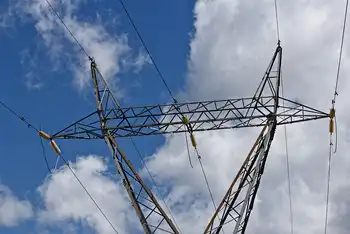
Russian Missiles and Drones Target Kyiv's Power Grid in Five-Hour Assault
Assault on Kyiv's Power Grid intensifies as missiles and drones strike critical energy infrastructure. Ukraine's air defenses intercept threats, yet blackouts, heating risks, and civilian systems damage mount amid escalating winter conditions.
Key Points
Missile and drone strikes on Kyiv's power grid to cripple infrastructure, cause blackouts, and pressure civilians.
✅ Targets power plants, substations, and transmission lines
✅ Air defenses intercept many missiles and drones
✅ Blackouts jeopardize heating, safety, and communications
In a troubling escalation of hostilities, Russian forces launched a relentless five-hour assault on Kyiv, employing missiles and drones to target critical infrastructure, particularly Ukraine's power grid. This attack not only highlights the ongoing conflict between Russia and Ukraine but also underscores the vulnerability of essential services, as seen in power outages in western Ukraine in recent weeks, in the face of military aggression.
The Nature of the Attack
The assault began early in the morning and continued for several hours, with air raid sirens ringing out across the capital as residents were urged to seek shelter. Eyewitnesses reported a barrage of missile strikes, along with the ominous whir of drones overhead. The Ukrainian military responded with its air defense systems, successfully intercepting a number of the incoming threats, but several strikes still managed to penetrate the defenses.
One of the most alarming aspects of this attack was its focus on Ukraine's energy infrastructure. Critical power facilities were hit, resulting in significant disruptions to electricity supply across Kyiv and surrounding regions. The attacks not only caused immediate outages but also threatened to complicate efforts to keep the lights on in the aftermath.
Impacts on Civilians and Infrastructure
The consequences of the missile and drone strikes were felt immediately by residents. Many found themselves without power, leading to disruptions in heating, lighting, and communications. With winter approaching, the implications of such outages become even more serious, as keeping the lights on this winter becomes harder while temperatures drop and the demand for heating increases.
Emergency services were quickly mobilized to assess the damage and begin repairs, but the scale of the attack posed significant challenges. In addition to the direct damage to power facilities, the strikes created a climate of fear and uncertainty among civilians, even as many explore new energy solutions to endure blackouts.
Strategic Objectives Behind the Assault
Military analysts suggest that targeting Ukraine's energy infrastructure is a calculated strategy by Russian forces. By crippling the power grid, the intention may be to sow chaos and undermine public morale, forcing the government to divert resources to emergency responses rather than frontline defenses. This tactic has been employed previously, with significant ramifications for civilian life and national stability.
Moreover, as winter approaches, the vulnerability of Ukraine’s energy systems becomes even more pronounced, with analysts warning that winter looms over the battlefront for civilians and troops alike. With many civilians relying on electric heating and other essential services, an attack on the power grid can have devastating effects on public health and safety. The psychological impact of such assaults can also contribute to a sense of hopelessness among the population, potentially influencing public sentiment regarding the war.
International Response and Solidarity
The international community has responded with concern to the recent escalation in attacks. Ukrainian officials have called for increased military support and defensive measures to protect critical infrastructure from future assaults, amid policy shifts such as the U.S. ending support for grid restoration that complicate planning. Many countries have expressed solidarity with Ukraine, reiterating their commitment to support the nation as it navigates the complexities of this ongoing conflict.
In addition to military assistance, humanitarian aid is also critical, and instances of solidarity such as Ukraine helping Spain amid blackouts demonstrate shared resilience. As the situation continues to evolve, many organizations are working to provide relief to those affected by the attacks, offering resources such as food, shelter, and medical assistance. The focus remains not only on immediate recovery efforts but also on long-term strategies to bolster Ukraine’s resilience against future attacks.
Related News
EF Partner Media
Related Articles From ET Magazine

The Role of SCADA in Grid Monitoring and Control
As electric power systems grow in complexity, the need for real-time monitoring and control has never been greater. At the center of this transformation is SCADA—Supervisory Control and Data Acquisition—a system architecture that enables utilities to collect, process, and act on data from remote field devices. From high-voltage substations to distributed energy resources (DERs), SCADA platforms are the nerve center of modern grid operations.
SCADA systems provide utilities with critical operational visibility, allowing for effective grid management, improved reliability, and faster fault detection. As demand increases for automation, decentralized energy integration, and advanced analytics, SCADA’s role continues to expand well beyond its traditional boundaries.
SCADA Architecture: Core Components and Functions
The basic architecture of a SCADA system consists of three primary layers: field devices, communication infrastructure, and the central control system. Together, these layers enable seamless remote monitoring and control of electrical assets across wide geographic areas.
Field Devices: These include Remote Terminal Units
(RTUs) and Programmable Logic Controllers (PLCs) installed at substations, transformers, and switchgear. They interface with physical equipment and sensors to collect real-time data.
Communication Layer: Data is transmitted using telemetry protocols such as DNP3, Modbus, or IEC 60870-5-104 over Ethernet, fiber optics, or radio networks.
SCADA Control Center: A central Human-Machine Interface (HMI) displays data to operators and allows manual or automatic commands to be issued. This interface connects with historian databases, alarm systems, and control logic modules.
SCADA enables grid operators to supervise power flows, manage voltage levels, and respond to equipment failures in near real-time—essential capabilities for ensuring grid stability and minimizing downtime.
SCADA vs DMS vs EMS: Understanding the Differences
While SCADA forms the backbone of real-time operations, it’s often confused with other grid management systems like DMS (Distribution Management System) and EMS (Energy Management System). Each plays a distinct role in utility operations.
SCADA focuses on data acquisition and supervisory control. It provides real-time visibility into field equipment status and telemetry.
DMS builds on SCADA by adding distribution automation, outage management, volt/VAR control, and fault location isolation and service restoration (FLISR) capabilities. It is tailored for the medium- and low-voltage distribution grid.
EMS operates at the transmission level, optimizing power generation, load forecasting, unit commitment, and economic dispatch. EMS integrates market operations and power flow analysis into the control strategy.
In many utilities, these systems are integrated into a unified control platform to provide comprehensive situational awareness and efficient grid operations from generation to distribution.
Integrating DERs into SCADA Systems
As distributed energy resources (DERs)—such as rooftop solar, wind turbines, and battery storage—proliferate, SCADA systems must evolve to manage bi-directional power flows and maintain power quality.
Modern SCADA platforms are increasingly integrated with DER Management Systems (DERMS), enabling operators to:
- Monitor generation from behind-the-meter assets
- Control inverter settings for voltage regulation
- Coordinate dispatch with grid demands
- Ensure grid synchronization and stability
To achieve this, SCADA must support open protocols, real-time communication, and dynamic data modeling to accommodate the variability and intermittency of DERs. This shift is essential for grid modernization and the transition to a decentralized energy ecosystem.
Read the full article at:
https://online.electricity-today.com/electricity-today/q2-2025/

Cybersecurity in Substation and Grid Communications
As power systems become increasingly digitized and connected, the importance of cybersecurity in substation and grid communications has grown exponentially. With the integration of intelligent electronic devices (IEDs), SCADA systems, and remote monitoring, modern substations are now part of a broader cyber-physical infrastructure. While these technologies enable real-time control and improved reliability, they also expose utilities to cyber threats that can disrupt critical services and damage essential assets.
Ensuring the cybersecurity of substation networks is no longer optional—it’s a core requirement for grid stability, national security, and compliance with regulatory standards such as NERC CIP (North American Electric Reliability Corporation Critical Infrastructure Protection).
The Cyber Threat Landscape for Electric Utilities
Substations were once isolated, but the shift to remote access, IoT sensors, and cloud-connected platforms has expanded the attack surface dramatically. Today’s threats include malware, ransomware, insider threats, and state-sponsored attacks targeting the operational technology (OT) layer.
Because substations form the backbone of the transmission and distribution (T&D) network, any cyber incident can lead to blackouts, equipment failures, or cascading effects across the grid. Moreover, attackers often seek to exploit legacy devices, poor segmentation, or insecure remote connections to move laterally within the system.
NERC CIP Compliance: A Baseline for Protection
To address these growing risks, regulatory frameworks like NERC CIP have been developed to enforce a minimum standard of protection for critical infrastructure. NERC CIP governs the cybersecurity of bulk electric system assets across the U.S. and parts of Canada.
NERC CIP requires utilities to:
- Identify and categorize critical cyber assets
- Implement access control and authentication protocols
- Maintain audit trails and perform log analysis
- Conduct vulnerability assessments and incident response planning
Ensure physical and cyber perimeter security
Although NERC CIP provides a strong compliance foundation, it must be supplemented by real-time, adaptive defenses to address evolving threats and zero-day vulnerabilities.
Real-Time Threat Detection and Network Monitoring
Modern substations must go beyond static defenses and implement real-time threat detection capabilities. This includes the deployment of intrusion detection systems (IDS), network security monitoring (NSM) tools, and behavioral analytics platforms tailored for industrial control systems (ICS).
These tools enable operators to:
- Monitor communication patterns between IEDs, RTUs, and SCADA components
- Detect anomalies such as unexpected protocol usage or lateral movement
- Set automated alerts for known attack signatures or abnormal traffic volumes
- Analyze network flows in segmented OT zones
- Enhanced network visibility is critical, particularly when dealing with IEC 61850 protocols and other substation-specific communications that differ from traditional IT systems.
In addition, time-stamped logging, centralized SIEM integration, and forensic capabilities allow security teams to trace and respond to incidents rapidly, minimizing downtime and reducing impact.
Read the full article at:
https://online.electricity-today.com/electricity-today/q2-2025/

Understanding the IEC 61850 Protocol in Substation Automation
https://online.electricity-today.com/electricity-today/q2-2025/

Understanding the IEC 61850 Protocol in Substation Automation
Electricity Today T&D Magazine Subscribe for FREE

- Timely insights from industry experts
- Practical solutions T&D engineers
- Free access to every issue
EF T&D Live Online Forums
Register for our FREE T&D Live Online Forums and join our live expert-led webinars on the latest electrical industry topics.- Industry expert insights on trending technologies
- Free access to recorded webinar presentations
- Downloadable PDF presentations
- Convenient viewing on your schedule—no attendance required








